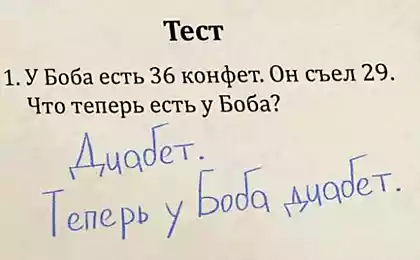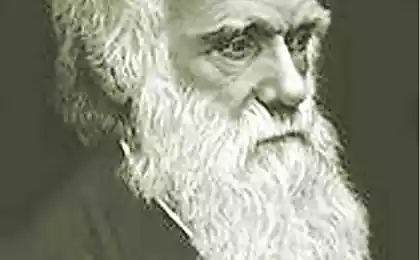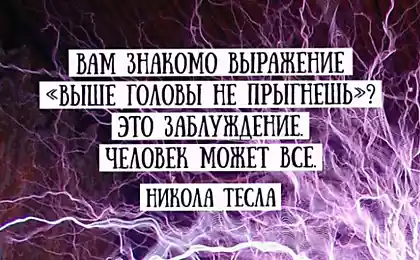555
Nobel laureate Frank Wilczek: the BEAUTY of PHYSICS
A popular exposition of cutting-edge theories of physics and the collection of mantras for deep meditation — so you can briefly describe the book of the Nobel laureate Frank Wilczek "the Beauty of physics. Comprehending the nature of the device".
The author shows the underlying physical concepts of the idea of beauty and symmetry, from the ornate treatises of the Greek philosophers to the latest scientific publications.
In this way the reader waiting for parables, anecdotes, beautiful illustrations, and much more that will make the journey fascinating, even for those who were at the school on the physics of sad three.
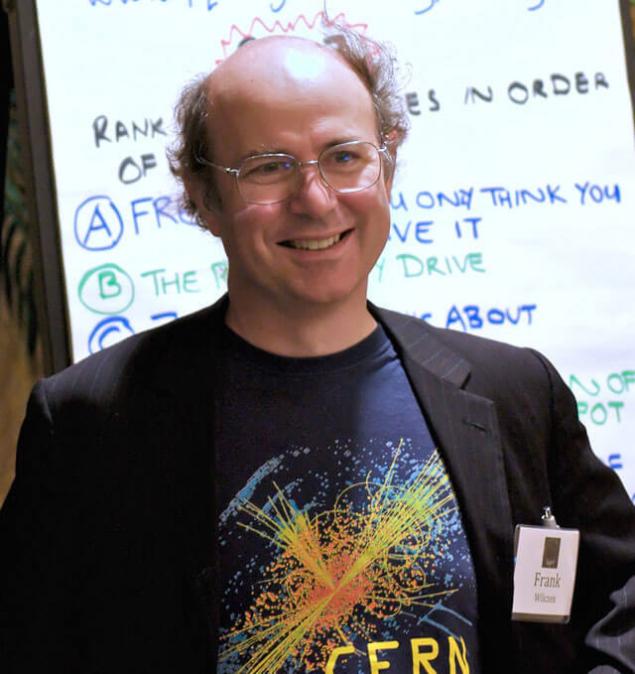
Frank Wilczek is an American physicist, Professor at mit. In 2004, he received the Nobel prize in physics for "the discovery of asymptotic freedom in the theory of strong interactions" (with David gross and David Politzer). His Nobel lecture he began with the words: "In theoretical physics, paradoxes have played a positive role. It seems paradoxical..."
From the Chapter "Beautiful answer"?
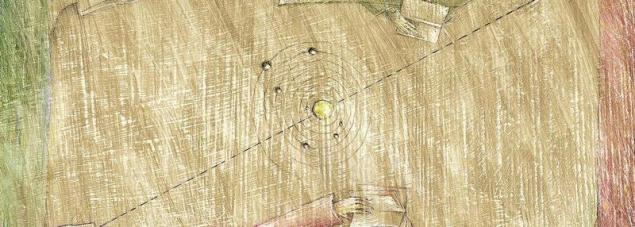
Illustration: Peter Perevezentsev
From heaven to earth
When I finished this book, there was an unpleasant event that brought me back down to earth. My laptop, which for me was almost like an appendage of the brain that was stolen. I was devastated.
But then a miracle happened. I had a backup of all my data, and after a few days I had a new laptop with all the recovered data: images, words, calculations, music, etc that was encoded in the digits in rows of zeros and ones — so precisely that they can be restored without noticeable difference. It occurred to me that one can hardly wish for a more tangible, direct and impressive demonstration of the truth of the assertion of Pythagoras:
All things are numbers.
It is a beautiful reality that I brought — and bring — gratitude.
From a terminological Glossary Frank Wilczek: "We say that two approaches to the same task, additional (or complementary), if each of them is legitimate and logical in itself, but they cannot be used at the same time as interfere with each other.
This is a common situation in quantum mechanics. For example, you can choose to measure the position of particle in space or its momentum — but it is impossible to measure both of these characteristics simultaneously, as these measurements interfere with each other.
Partly inspired by such examples, but also his extensive experience in life, Niels Bohr suggested that it would be reasonable to apply the concept of complementarity much more widely as an original method of solving difficult problems and overcoming apparent contradictions. Such a broader concept of complementarity, which seems to me to be useful and liberating, is best explained by examples"
Complementarity as wisdom
Do I contradict myself?
Well, then, I contradict myself.
I am large, I contain in itself many different people.
Walt Whitman. Leaves of grass
Our study of Nature has shown us many new perspectives. It is not easy to align them with everyday experience, as well as with each other. The result of immersion in the quantum world, where is the contradiction and truth are closely adjacent to each other, Niels Bohr learned of Uraldomnaremont:
The sign of Yin-Yang is a symbol of complementarity, and it was adopted in the forest. Two of its sides are equal, but they are different; each contains the other and is contained in the other. Perhaps not coincidentally Niels Bohr was very happily married.
Being understood, complementarity is the wisdom which we open once again and confirm in the material world and outside it. This is the wisdom I perceive and offer you. Let's look at some complementary pairs:

Illustration: Peter Perevezentsev
Simplification and Abundance
The basic building blocks of Nature are few and very simple, their properties are determined completely by equations of high degree of symmetry.
The world of objects is vast, infinitely varied and inexhaustible.
A deeper understanding of the fundamentals can not cancel a wealth of experience. It can illuminate and brighten the experience a new light that gives us the opportunity to enrich it further.
One world and Many worlds
The brain of one person is minimal, the seat of human thinking. It is located inside the individual skull individual living body here on planet Earth.
Most people most of the time — when they are not philosophizing and not engaged in astronomy — think about the events that occur in a small region of space near the Earth's surface.
Here is history of mankind: the great war, great art and challenging the billions of "ordinary" lives.
If you look at it, even from near space, the Earth is just a tiny speck of reflected light.
Recent advances in cosmology allow us to think that the Universe we currently can explore even the most powerful tools is only a small part of the multiverse, the Daleks part which could look completely different.
If it became known exactly, it would boost the idea, which has repeatedly sounded before:
The existence of the surrounding vastness does not diminish me, you, or humanity as a whole. It can inspire and inspires our imagination.

Illustration: Peter Perevezentsev
The object and the Person
I and you is a collection of quarks, gluons, electrons and photons.
I you are thinking people.
A definite and Free
You and I is a material object that obeys the laws of physics.
You and I — we are able to make a choice. You and I — we are responsible for it.
Transient and Eternal
The state of the world is in perpetual motion, and any object in it is subject to change.
Concepts exist outside of time, and since all things are numbers, they save us from its influence.
At the forefront of physics and cosmology this complementarity plays a very important role. Currently we are doing a difficult separation between the laws of physics and the initial conditions, which must be overcome. Understanding of the world by any finite observer develops, but the space-time in General, which is the most natural arena to describe the world, does not.
Quantum-mechanical wave function of the system as a whole may be constant over time, while its parts, considered separately, are experiencing relative changes. (For experts: this regularly happens for the energy eigenfunctions of complex systems.)
Something like this could be true for the world as a whole. Change without changing, the great and fruitful principle of symmetry would then be fully embodied, paradoxical as Parmenides insisted:
One story, one road now
Left: this one. And it has signs
In many, that being is uncreated and indestructible
Whole, unified, and unwavering, and complete.
See also: physics of Revelation back from the dead
How physics will change the world in the next 100 years
The final complementary pair completes our meditation:
Beautiful and Ugly
The material world embodies the beauty.
Material world holds misery, suffering and strife.
Thinking about any aspect, we must not forget about the other.published
P. S. And remember, only by changing their consumption — together we change the world! ©
Join us in Facebook , Vkontakte, Odnoklassniki
Source: kot.sh/statya/1814/krasota-fiziki
The author shows the underlying physical concepts of the idea of beauty and symmetry, from the ornate treatises of the Greek philosophers to the latest scientific publications.
In this way the reader waiting for parables, anecdotes, beautiful illustrations, and much more that will make the journey fascinating, even for those who were at the school on the physics of sad three.

Frank Wilczek is an American physicist, Professor at mit. In 2004, he received the Nobel prize in physics for "the discovery of asymptotic freedom in the theory of strong interactions" (with David gross and David Politzer). His Nobel lecture he began with the words: "In theoretical physics, paradoxes have played a positive role. It seems paradoxical..."
From the Chapter "Beautiful answer"?

Illustration: Peter Perevezentsev
From heaven to earth
When I finished this book, there was an unpleasant event that brought me back down to earth. My laptop, which for me was almost like an appendage of the brain that was stolen. I was devastated.
But then a miracle happened. I had a backup of all my data, and after a few days I had a new laptop with all the recovered data: images, words, calculations, music, etc that was encoded in the digits in rows of zeros and ones — so precisely that they can be restored without noticeable difference. It occurred to me that one can hardly wish for a more tangible, direct and impressive demonstration of the truth of the assertion of Pythagoras:
All things are numbers.
It is a beautiful reality that I brought — and bring — gratitude.
From a terminological Glossary Frank Wilczek: "We say that two approaches to the same task, additional (or complementary), if each of them is legitimate and logical in itself, but they cannot be used at the same time as interfere with each other.
This is a common situation in quantum mechanics. For example, you can choose to measure the position of particle in space or its momentum — but it is impossible to measure both of these characteristics simultaneously, as these measurements interfere with each other.
Partly inspired by such examples, but also his extensive experience in life, Niels Bohr suggested that it would be reasonable to apply the concept of complementarity much more widely as an original method of solving difficult problems and overcoming apparent contradictions. Such a broader concept of complementarity, which seems to me to be useful and liberating, is best explained by examples"
Complementarity as wisdom
Do I contradict myself?
Well, then, I contradict myself.
I am large, I contain in itself many different people.
Walt Whitman. Leaves of grass
Our study of Nature has shown us many new perspectives. It is not easy to align them with everyday experience, as well as with each other. The result of immersion in the quantum world, where is the contradiction and truth are closely adjacent to each other, Niels Bohr learned of Uraldomnaremont:
- none of the views does not exhaust the reality;
- a different perspective can be valuable, though mutually exclusive.
The sign of Yin-Yang is a symbol of complementarity, and it was adopted in the forest. Two of its sides are equal, but they are different; each contains the other and is contained in the other. Perhaps not coincidentally Niels Bohr was very happily married.
Being understood, complementarity is the wisdom which we open once again and confirm in the material world and outside it. This is the wisdom I perceive and offer you. Let's look at some complementary pairs:

Illustration: Peter Perevezentsev
Simplification and Abundance
The basic building blocks of Nature are few and very simple, their properties are determined completely by equations of high degree of symmetry.
The world of objects is vast, infinitely varied and inexhaustible.
A deeper understanding of the fundamentals can not cancel a wealth of experience. It can illuminate and brighten the experience a new light that gives us the opportunity to enrich it further.
One world and Many worlds
The brain of one person is minimal, the seat of human thinking. It is located inside the individual skull individual living body here on planet Earth.
Most people most of the time — when they are not philosophizing and not engaged in astronomy — think about the events that occur in a small region of space near the Earth's surface.
Here is history of mankind: the great war, great art and challenging the billions of "ordinary" lives.
If you look at it, even from near space, the Earth is just a tiny speck of reflected light.
Recent advances in cosmology allow us to think that the Universe we currently can explore even the most powerful tools is only a small part of the multiverse, the Daleks part which could look completely different.
If it became known exactly, it would boost the idea, which has repeatedly sounded before:
- "peace," given in sensation each person is just one of the billions of such (one per person at least);
- Earth is just one of the planets of our Sun;
- our Sun is just one of billions of stars in our Galaxy named the milky Way;
- our Galaxy is only one of billions in the visible Universe.
The existence of the surrounding vastness does not diminish me, you, or humanity as a whole. It can inspire and inspires our imagination.

Illustration: Peter Perevezentsev
The object and the Person
I and you is a collection of quarks, gluons, electrons and photons.
I you are thinking people.
A definite and Free
You and I is a material object that obeys the laws of physics.
You and I — we are able to make a choice. You and I — we are responsible for it.
Transient and Eternal
The state of the world is in perpetual motion, and any object in it is subject to change.
Concepts exist outside of time, and since all things are numbers, they save us from its influence.
At the forefront of physics and cosmology this complementarity plays a very important role. Currently we are doing a difficult separation between the laws of physics and the initial conditions, which must be overcome. Understanding of the world by any finite observer develops, but the space-time in General, which is the most natural arena to describe the world, does not.
Quantum-mechanical wave function of the system as a whole may be constant over time, while its parts, considered separately, are experiencing relative changes. (For experts: this regularly happens for the energy eigenfunctions of complex systems.)
Something like this could be true for the world as a whole. Change without changing, the great and fruitful principle of symmetry would then be fully embodied, paradoxical as Parmenides insisted:
One story, one road now
Left: this one. And it has signs
In many, that being is uncreated and indestructible
Whole, unified, and unwavering, and complete.
See also: physics of Revelation back from the dead
How physics will change the world in the next 100 years
The final complementary pair completes our meditation:
Beautiful and Ugly
The material world embodies the beauty.
Material world holds misery, suffering and strife.
Thinking about any aspect, we must not forget about the other.published
P. S. And remember, only by changing their consumption — together we change the world! ©
Join us in Facebook , Vkontakte, Odnoklassniki
Source: kot.sh/statya/1814/krasota-fiziki

